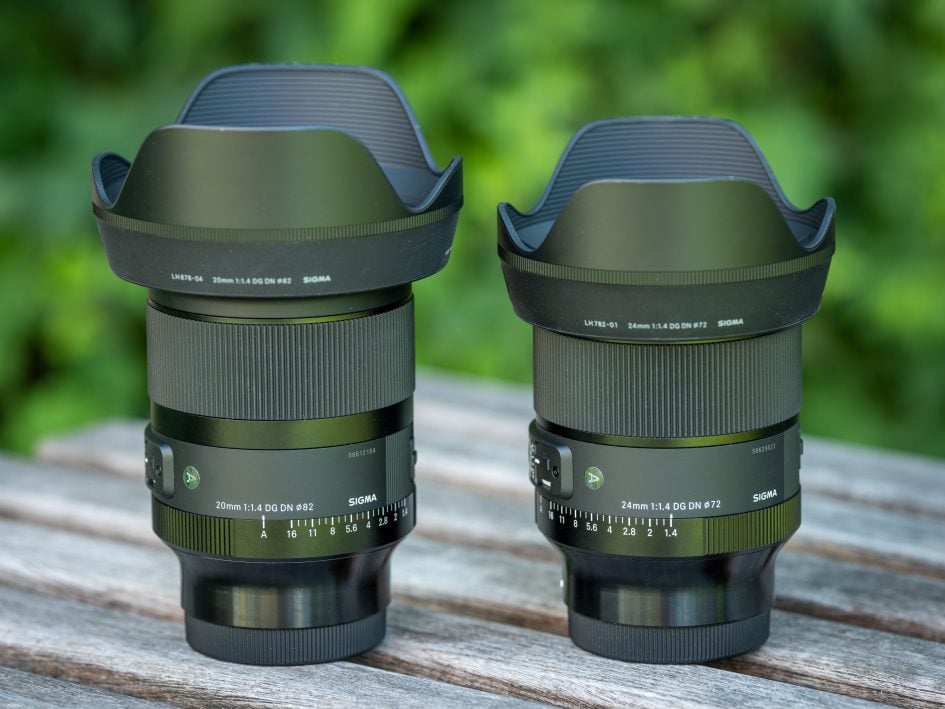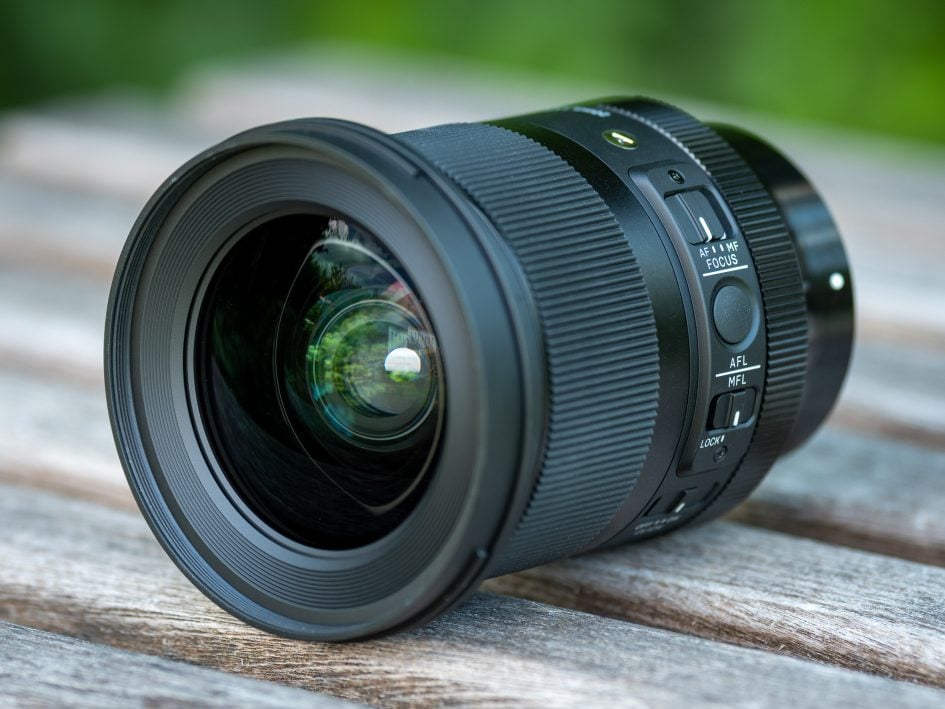Sigma 20mm f1.4 DG DN Art review
-
-
Written by Thomas
Verdict
Sigma’s 20mm f1.4 DG DN Art is a well featured ultra-wide prime lens: It is thoroughly weather sealed, has an AF-lock button plus a switch to disable the focus ring, a de-clickable aperture ring, and it can take filters at the front and rear. Its bright f1.4 focal ratio, well controlled coma, and flat field at infinity makes it especially suited for astro photography. The lens offers quite a nice Bokeh for 20mm focal length and lets you shoot confidently in adverse contra-light situations. Autofocus is pretty fast and reliable and the lens has very little focus breathing. And finally you can get the mount changed between E-mount and L-mount – at a cost.
What’s not to like? Well, the closer you focus the stronger the barrel distortions become – up to the point where they are no longer corrected by the lens profile. The lens also develops quite some field curvature in close-up shooting. And I detected a bit of focus shift around f2.8 – which is not a problem if you don’t change aperture after focusing. I also wish that the lens were a bit sharper outside the center and had better control of longitudinal colour aberrations. But that is complaining at a high level.
Let’s put this into perspective and have a closer look at how the Sigma 20mm f1.4 DG DN Art compares to the Sony FE 20mm f1.8 G, Sigma 24mm f1.4 DG DN Art, and Sigma 20mm f2 DG DN.
Above: Sigma 20mm f1.4 DG DN Art (left), Sigma 24mm f1.4 DG DN Art (rigth)
Compared to Sony FE 20mm f1.4 G
Sony’s FE 20mm f1.8 G is simply sharper across the full frame at any shooting distance. It might have a bit more coma in the FF-corner but that becomes only relevant in astro photography. And its control of longitudinal colour aberrations and distortions is also better. But there are two things that the Sony falls behind: The Sigma renders the better Bokeh and it has a 2/3 of a stop brighter focal ratio. The latter making the Sigma the bigger and heavier lens. Regarding features and price: Both lenses are similarly priced but the Sigma has a few features which the Sony does not offer: Lockable lens hood, MF-lock, rear filter holder, lockable aperture ring. So it’s a tough choice: If you want f1.4 and the better Bokeh go for the Sigma, if you want to produce the sharpest images go for the Sony.
For more details see my Sony FE 20mm f1.8 G review where it earned a Highly Recommended.
Compared to Sigma 24mm f1.4 DG DN Art
The Sigma 24mm f1.4 DG DN Art can be considered an alternative to the 20mm Sigma – if you don’t necessarily need the ultra-wide angle-of-view: The 24mm covers 84 degrees while the 20mm covers 94 degrees. This does not sound like much but it’s a visible difference and can be decisive especially when shooting close interiors where you cannot simply step back. On the other hand the 24mm Sigma has the benefit of a 20% longer reach and is less prone to the perspective distortions a 20mm lens produces at the borders. Feature-wise both lenses are almost identical with the 24mm Sigma being smaller and lighter – and 100 EUR / USD cheaper too. Optically the 24mm is a tad less sharp than the 20mm outside the center and has a bit more coma but otherwise both lenses performe pretty close. So choices are pretty clear: If you need the ultra-wide angle-of-view get a 20mm lens – otherwise the Sigma 24mm f1.4 DG DN Art is an interesting alternative.
For more details check back soon for my upcoming Sigma 24mm f1.4 DG DN Art review.
Compared to Sigma 20mm f2 DG DN
I didn’t test the Sigma 20mm f2 DG DN myself but from Gordon’s review and the MTF charts I’d conclude that the lens is less sharp than the Sony across the full frame and also a bit softer than the Sigma 20mm f1.4 DG DN Art outside the APS-C image-circle. Stop it down to f5.6 or f8 and you’ll have crisp results across the frame. But the biggest difference between both lenses is the focal ratio of f2.0 versus f1.4 which certainly nets the Sigma 20mm f1.4 DG DN Art the better Bokeh – but also makes it over 250g heavier, 39mm longer, and 300 EUR more expensive than the Sigma 20mm f2 DG DN.
For more details see Gordon’s Sigma 20mm f2 DG DN review where it came Recommended.
Sigma 20mm f1.4 DG DN Art final verdict
Sigma’s 20mm f1.4 DG DN Art is a well performing and well featured ultra-wide prime lens ideal for expansive landscapes, tight interiors, vlogging or environmental portraiture. And its bright f1.4 focal ratio, well controlled coma, and flat field at infinity makes it especially suited for astro photography. The lens is thoroughly weather sealed, has an AF-lock button plus a switch to disable the focus ring, a de-clickable aperture ring, and it can take filters at the front and rear. The lens offers quite a nice Bokeh for an ultra-wide and lets you shoot confidently in adverse contra-light situations. And although it is not quite as sharp as the Sony FE 20mm f1.8 G the combined package of features and performance makes Sigma’s 20mm f1.4 DG DN Art still Highly Recommended.
Good points:
- Good to very good sharpness across the full frame.
- Very high contrast and resistance against flare, glare, and ghosting.
- Nice Bokeh (for a 20mm lens).
- Very little coma and flat field at infinity suitable for astro photography.
- Pretty fast and reliable autofocus.
- Very little focus breathing.
- Extensive weather sealing plus fluorine coating against moist and dust.
- Dedicated de-clickable aperture ring, AF-lock and MF-lock.
- Can swap mounts (at a cost) between Sony E and Leica L-mount.
Bad points:
- Longitudinal colour aberrations could be lower.
- Some focus shift at closer distances.
- Strong distortions and field curvature at magnifications of 1:10 or bigger.






